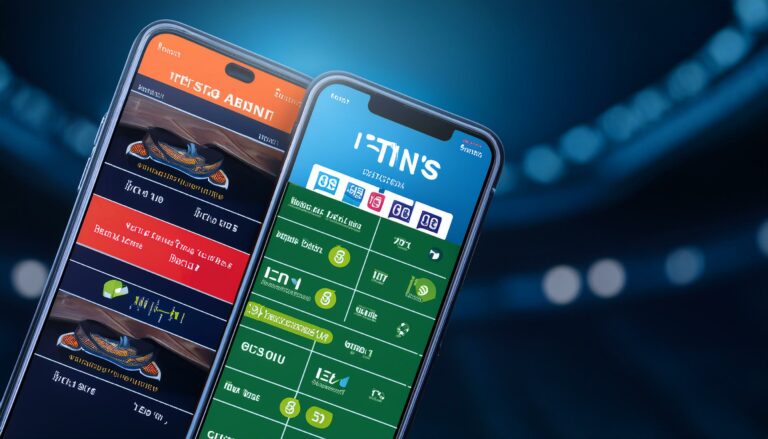The Role of Cricket Coaches in Developing Team Strategy and Cohesion
Reddy Anna Book, Reddy Book Club: Clear communication is the cornerstone of successful teamwork in any setting. It ensures that directives are understood, feedback is effectively given and received, and goals are shared among team members. Without clear communication, confusion and misunderstandings can arise, leading to inefficiency and unnecessary errors.
In a team environment, clear communication fosters a sense of trust and cohesion among members. When everyone is on the same page and information is transparent, individuals feel empowered to contribute their ideas and work together towards a common objective. Additionally, clear communication helps to resolve conflicts swiftly and constructively, preventing misunderstandings from escalating and maintaining a positive team dynamic.
Understanding Individual Player Strengths and Weaknesses
Identifying the unique strengths and weaknesses of each player is a crucial aspect of successful team management. By recognizing what each individual brings to the team in terms of skills, qualities, and characteristics, coaches can better tailor their strategies and tactics to optimize overall team performance. Understanding these individual attributes also allows coaches to create a more balanced and cohesive team by leveraging the strengths of one player to compensate for the weaknesses of another.
Moreover, acknowledging and addressing player weaknesses is key to developing a well-rounded team. Coaches can provide targeted support and guidance to help players improve in areas where they may be lacking, ultimately enhancing the team’s overall capabilities. By fostering a culture of self-awareness and continuous improvement, coaches can empower players to work on their weaknesses and strive towards becoming more effective and versatile team members.
Creating a Team Culture and Identity
Building a strong team culture and identity is crucial for the success of any sports team. When players feel connected to a shared vision and values, they are more motivated to work towards common goals. This sense of unity fosters a positive team environment where individuals feel respected and supported.
A strong team culture also helps in developing trust and communication among team members. When players understand and respect each other’s differences, they are better equipped to work together towards victory. By fostering a culture of inclusivity and mutual respect, teams can create a supportive and uplifting environment for all players to thrive in.
Implementing Tactical Plans
Once the overarching game plan has been devised, the next critical step in the process is executing tactical plans that align with the team’s strategic objectives. Tactical plans outline the specific actions, movements, and decisions that players need to make on the field to achieve the desired outcomes. In soccer, for example, this may include formations, pressing triggers, defensive shape, and attacking patterns that are practiced and fine-tuned during training sessions.
Implementing tactical plans requires a deep understanding of the game, keen observation skills, and the ability to make real-time adjustments based on the unfolding dynamics of a match. Coaches play a pivotal role in guiding players to execute these plans effectively by providing clear instructions and feedback during games. Additionally, players must be disciplined and cohesive in their execution, each understanding their roles and responsibilities within the tactical framework set out by the coaching staff.
Fostering Team Cohesion and Unity
To build a strong team, it is essential to foster cohesion and unity among all members. When there is a sense of connectedness and togetherness within the team, individuals are more likely to work towards a common goal and support one another in achieving success. This can be achieved through regular team-building activities, open communication channels, and promoting a culture of inclusivity and respect.
Creating a unified team also involves acknowledging and celebrating the unique strengths and contributions of each team member. By recognizing and valuing individual differences, team cohesion can be enhanced as members feel appreciated and empowered. Encouraging collaboration and teamwork, setting shared goals, and providing opportunities for collective decision-making can further strengthen the bonds between team members.
Providing Feedback and Support
Feedback and support are essential components in cultivating a successful team dynamic. Constructive feedback should be specific, objective, and delivered in a timely manner to help players understand areas for improvement. It is crucial for coaches to offer praise and encouragement to motivate players and reinforce positive behavior.
Supporting players emotionally and mentally is just as important as providing feedback on their performance. Coaches should create a supportive environment where players feel comfortable expressing their thoughts and concerns. Building trust and rapport with players is key in fostering a strong coach-player relationship that can enhance overall team performance.
Adapting Strategies Based on Opposition
When facing different opponents in sports, it is crucial for teams to adapt their strategies accordingly. Understanding the strengths and weaknesses of the opposition allows teams to make tactical adjustments during a game. By analyzing the opponent’s playing style and tendencies, coaches can devise a game plan that exploits their vulnerabilities and neutralizes their strengths.
Adapting strategies based on the opposition also involves being flexible and open to making quick decisions during a match. Coaches and players need to communicate effectively on the field to implement changes seamlessly and respond to the evolving dynamics of the game. By staying observant and proactive, teams can increase their chances of success by adjusting their tactics in real-time to counter the strategies of the opposing team.
Utilizing Data and Analysis
As a coach, one of the key pillars of your success lies in your ability to effectively utilize data and analysis. By leveraging statistics, performance metrics, and game footage, you can gain valuable insights into your team’s strengths and areas for improvement. This data-driven approach not only allows you to make informed decisions when devising game strategies and tactics but also enables you to tailor your training sessions to address specific needs and goals of individual players and the team as a whole.
Moreover, by closely analyzing data and trends, you can stay ahead of the competition by identifying patterns and tendencies in your opponents’ playing style and strategies. This proactive approach enables you to adapt and fine-tune your own game plan to exploit weaknesses and capitalize on opportunities, ultimately increasing your team’s chances of success on the field. Embracing a systematic approach to data collection and analysis will undoubtedly elevate your coaching prowess and help steer your team towards achieving their full potential.
Managing Team Dynamics and Conflicts
Team dynamics and conflicts are inevitable in any group setting, but how they are managed can make all the difference in a team’s success. When conflicts arise, it is crucial for the team leader to address the issues head-on and facilitate open communication among team members. By encouraging honest dialogue and active listening, conflicts can be resolved more effectively, ultimately strengthening team dynamics.
Effective management of team dynamics also involves creating a supportive and inclusive team environment where each member feels valued and respected. Team leaders play a critical role in fostering a culture of trust and collaboration, which can help mitigate conflicts before they escalate. By promoting a sense of unity and camaraderie among team members, leaders can cultivate a positive team dynamic that enhances overall performance and cohesiveness.
Evaluating and Adjusting Performance Goals
Performance goals are crucial benchmarks that offer a clear direction for teams to strive towards. Regular evaluation of these goals is essential to track progress and identify any areas that may require adjustment. By consistently reviewing performance goals, coaches can ensure that they remain relevant and achievable, setting their teams up for success.
Adjusting performance goals should be a dynamic process that allows for flexibility and adaptability as circumstances change. Whether it’s due to unexpected obstacles or improved team capabilities, being open to revising performance goals can help drive continuous improvement and maintain motivation within the team. By incorporating feedback from both players and coaching staff, performance goals can be fine-tuned to better align with the team’s strengths and objectives, ultimately leading to enhanced performance outcomes.







